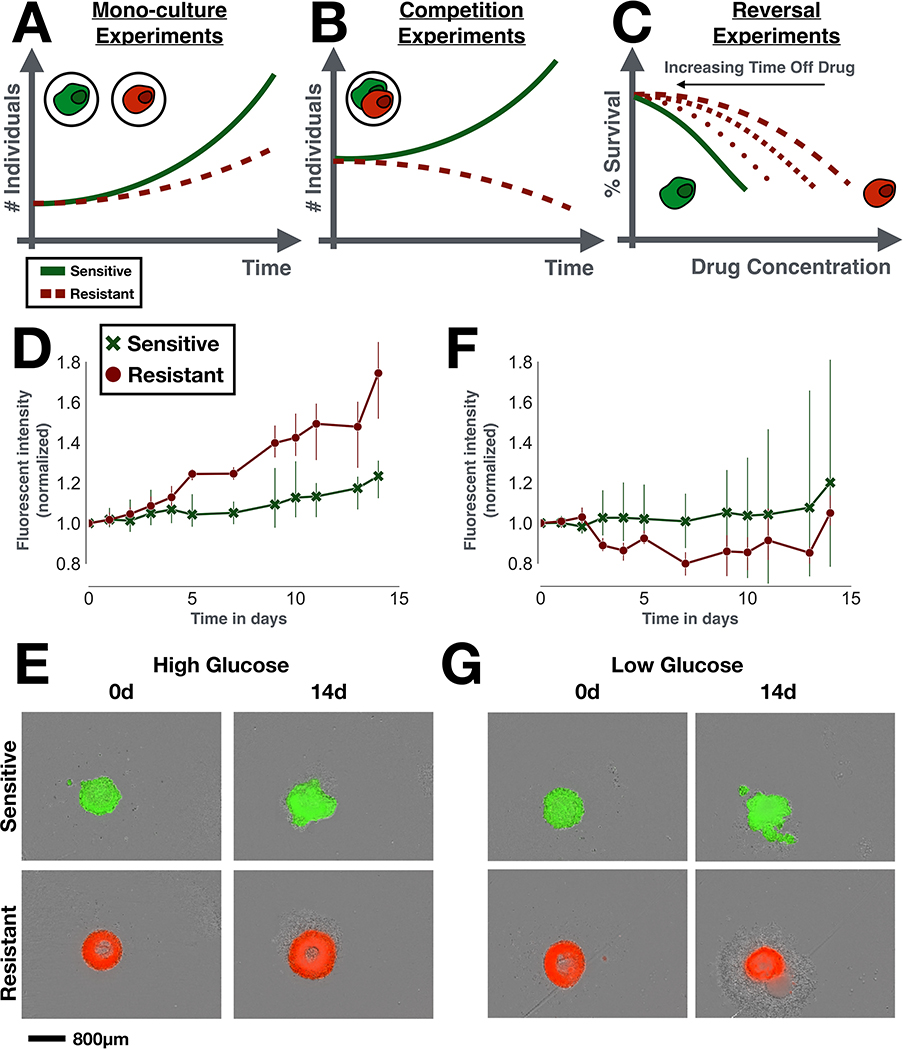Figure 1:
Resistance costs in theory and in practice. A-C) The three main experimental designs used to test for a cost of resistance (all done in drug-free conditions). A) Mono-culture experiments test for changes in growth rate, size, migration rate etc of the resistant strain in isolation. B) Competition experiments compare the abundance of sensitive and resistant cells in co-culture over time. C) Reversal experiments examine the rate at which drug resistance is lost, if the drug is withdrawn. To do so, the resistant population is cultured in a drug-free environment, and its drug response is tested at regular time intervals. D-G) In vitro spheroid experiments comparing the growth of doxorubicin-sensitive and resistant MCF7 cells in mono-culture. Sensitive and resistant cells were GFP and RFP tagged, respectively. D) In normal medium, resistant cells grow faster than sensitive cells, showing that resistance does not necessarily have to be costly (n = 3 per group; t-test of relative size change from baseline at 14d: t3,3 = 4.0,p = 0.02). E) Representative images of the initial (0d) and final time points (14d) from D, illustrating how the resistant spheroids expand more than the sensitive spheroids in normal glucose conditions. F) Under glucose starvation this advantage is lost (n = 3 per group; t-test of relative size change from baseline at 14d: t3,3 = −0.5,p = 0.66). This shows that the environmental context has to be considered when studying fitness costs. G) Representative images of the initial (0d) and final time points (14d) from G, showing how resistant spheroids are more affected when glucose is withdrawn (decrease in size, formation of large corona of debris around the spheroid). E and G show the fluorescent signal overlaid on the bright-field image. For experimental details see Section S1 in the Supplementary Data.

